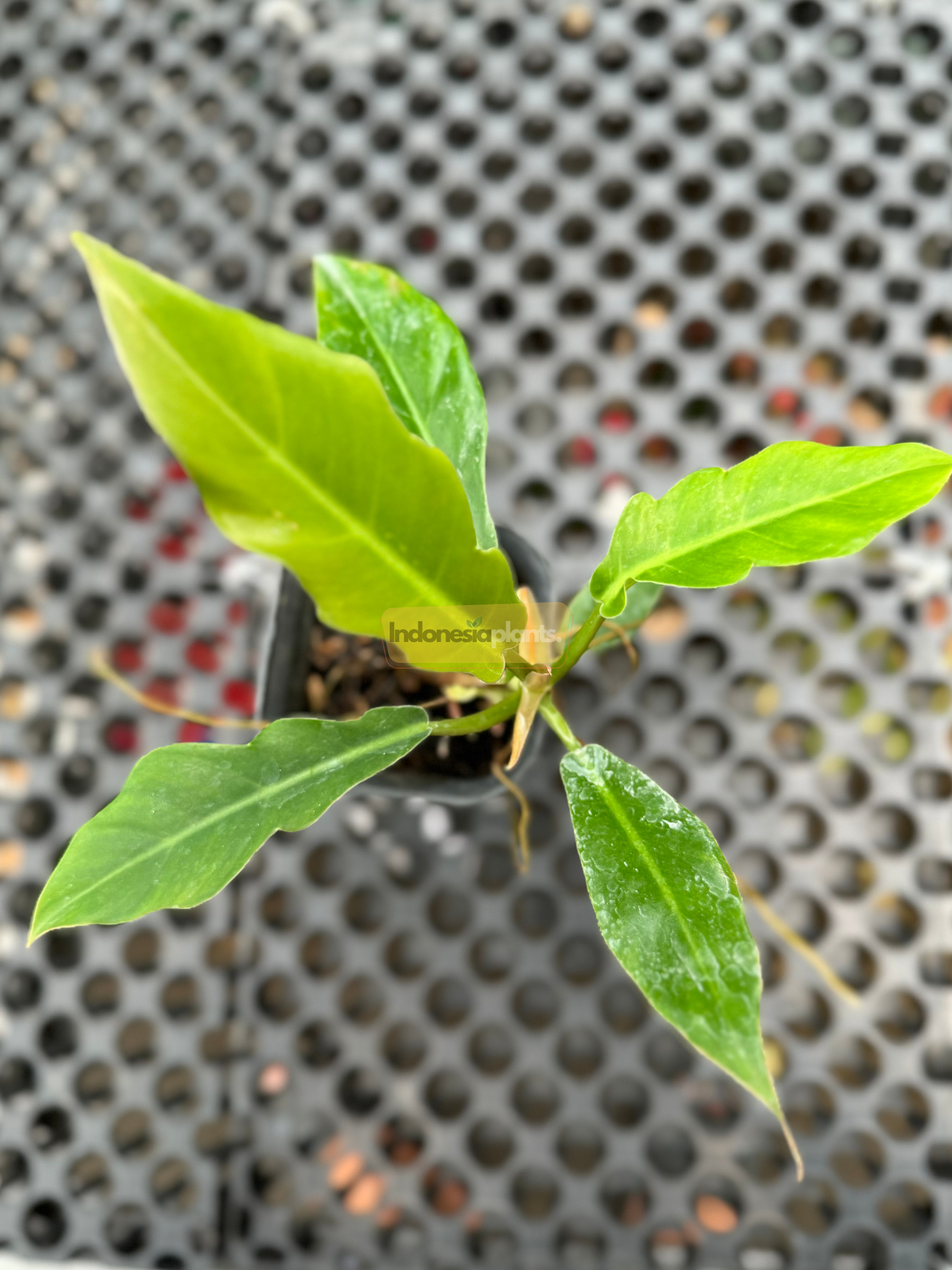indonesiaplants
Philodendron Green Saw
Philodendron Green Saw
Verfügbarkeit für Abholungen konnte nicht geladen werden
What You Will Receive:
- A healthy, well-rooted Philodendron Green Saw with a minimum of 4 leaves.
- Plant size may vary depending on stock; please refer to product photos for details.
- Carefully packaged to ensure the plant arrives in perfect condition.
A Tropical Showpiece for Your Indoor Jungle
Meet Philodendron Green Saw, a tropical houseplant with elongated lance-shaped leaves and a sleek, vibrant green finish that instantly adds a bold, clean look to your space. This easy-care plant is not only attractive but also a resilient companion for plant lovers—from beginners to seasoned collectors.
BOLD, WAVY FOLIAGE WITH PERSONALITY
- Glossy green leaves that taper to a gentle point with subtle saw-tooth waves.
- Each leaf emerges with a luminous chartreuse tone before deepening into mature green.
- The elongated shape adds vertical rhythm to your plant shelf or workspace.
Taxon & Identity
Known in collections as Philodendron ‘Green Saw’, this is a bold, self-heading philodendron type celebrated for its deeply cut, saw-toothed lobes. Mature leaves broaden and separate into dramatic “teeth,” delivering a sculptural, almost architectural profile. New growth opens a brighter green and settles into lush mid- to deep-green tones with a satin to semi-gloss surface (exact hue varies naturally by leaf and lighting).
Form & Habit
Unlike climbing philodendrons, Green Saw forms a clumping, upright rosette with sturdy petioles that hold the foliage aloft. As the plant matures, the crown develops presence without sprawling sideways, making it perfect for corners that need vertical energy. The lobed blades read graphic from across the room—think palmated panels with crisp divisions that cast beautiful shadows on pale walls.
Light
Aim for bright, diffused daylight—an east-window glow or any luminous spot behind sheers. Even luminance keeps petioles stout and the lobes sharply defined. Filter harsh midday sun to protect tender tissue; deep shade will soften definition and elongate spacing. If the silhouette starts losing “teeth,” increase overall brightness (still filtered) rather than fertilizer.
Hydration
Water thoroughly when the top 2–3 cm (≈1 in) of mix dries back, then allow complete drainage. A calm, repeatable rhythm—not constant wet—preserves clean margins and smooth unfurls on the large lobed blades. Expect a slightly faster cadence in brighter months and a longer interval during low-light seasons.
Root Medium
Use an oxygen-forward aroid blend: ~40% chunky orchid bark, 25% coco fiber/coir, 20% pumice or perlite, 10% horticultural charcoal, plus a light sphagnum buffer. The goal is quick drainage with gentle, even moisture. Choose a drainage-first vessel that provides stability for the tall leaf canopy.
Climate Envelope
Comfortable at 18–29 °C (65–85 °F) with ~50–70% RH and gentle airflow. Keep foliage away from heater/AC blasts; calm air keeps the thin edges of the lobes looking crisp. Light, regular feeding at ¼–½ strength during active months supports steady sizing and a rich, saturated green.
Training & Grooming
While largely self-supporting, a discreet stake can keep the crown centered as leaves size up. Rotate a quarter-turn every two weeks for uniform development around the canopy. Dust one or two leaves weekly with a soft cloth; remove spent sheaths to maintain a polished center. Tip-prune sparingly if you want to encourage a fuller, multi-shoot presentation.
Styling Playbook
- Planter palette: Sand, ecru, oatmeal, or charcoal in matte finishes frame the deep green without glare.
- Backdrop: Limewash, microcement, or pale timber lets the lobed silhouette throw elegant shadows.
- Companions: Pair with a velvety Anthurium (plush contrast) or a silver-patterned aroid for a cool accent; keep accessories low-gloss so the foliage leads.
- Placement: Flank a window, anchor a console end, or stage beside a sofa arm—anywhere a tall, disciplined shape can add architectural lift.
Diagnostics (Signals → Adjustments)
- Long gaps / softer outline: Raise even luminance; ensure the plant receives all-day, filtered brightness.
- Edge crisping: Typically late watering or very dry air—tighten cadence and soften airflow.
- Persistent wet mix: Increase bark/pumice fraction or step down one pot size to restore aeration.
- Dull, flat new leaves: Optimize light first; resume gentle feeding only after brightness is corrected.
With its striking, saw-cut lobes and upright, room-finishing posture, Philodendron ‘Green Saw’ delivers instant structure, modern greenery, and a photogenic shadow play—an easy, sculptural upgrade for design-forward spaces.






